| << Previous -- Index -- Next >> | ||||||
| Chapter 1 | Chapter 2 | Chapter 3 | Chapter 4 | Chapter 5 | Chapter 6 | Chapter 7 |
CHAPTER 1
AN ISLAND OF ORGANIZATION
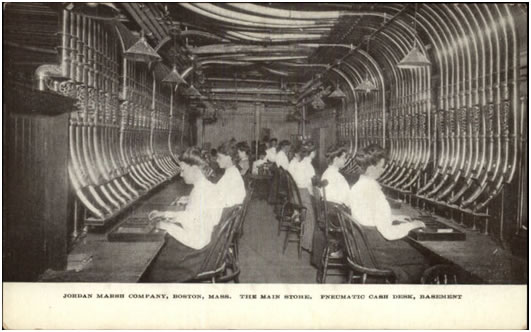
Figure 1: Pneumatic Tube System at Jordan Marsh Department Store, Boston, MA
At the early 20th century’s largest department store, a system of pneumatic tubes snaked their way between buildings and floors, delivering all manner of merchandise and credit reports, petty cash, and mail orders in a whoosh of air. These tubes terminated in the deep recesses of the basement, where an administrator perfunctorily emptied and filled orders like a loom-fixer exchanging bobbins in a textile mill. Embedded and hidden among masonry, the pneumatic tubes functioned in the interstices of the building to transfer cash for consumer goods at speeds never before imaginable. Whereas the haggling and peddling of an earlier era roared with dialogue, the diminutive slots, where the cash was whisked away, whispered in a new language that spoke of speed, change, and efficiency.
At a mid-sized industrial city a thousand miles to the east, the autobiographical protagonist created by writer Mary Doyle Curran, Ellen, stared through the shop window of a small drug store. Of the two windows in the store, one seemed monotonous and faded. Patent medicines filled the window alongside old-fashioned, nineteenth-century faces on dusty cardboard. One day, Ellen’s imagination was captured by a glint of red. It was an alluring devil advertising Pluto Water, a diuretic tonic. When the young Ellen demonstrates her honesty to the drug store owner he gives her the cardboard devil in gratitude. The devil made Ellen’s world “glow with color.”[1] But after a short stint as an object of worship by her schoolmates, the devil fades and the world forgets him. Ellen, however, continues to identify with the promotional cutout, especially when she plays King of the Hill. “I stood at the top of the hill firmly brandishing my flaming sword,” Doyle Curran writes, “heroically defeating the other side and casting them down as fallen angels.”[2]
Though Ellen is a character in a fictional novel, the red devil is not a figment of the writer’s imagination. Pluto Water displays really existed when Doyle Curran was growing up in the 1920s, and the shop window where Ellen saw the display was a real pharmacy near the writer’s childhood apartment. An advertisement in a trade journal communicates to drug store owners the benefits of installing Pluto Water’s trademark avatar, a red devil, in store windows: “An attractive window display of PLUTO WATER will be the connecting link between your pharmacy and our nation-wide advertising campaign… Once a sale is made you can bank on the purchaser becoming a regular customer.” Like the pneumatic tubes of Marshall Field’s, the Pluto Water window display was connected to national webs of interaction and association. Space – whether the department store basement or the drug store window – was linked to new, large, distant, and impersonal processes, bringing the allure of modernity into the most faded of outdated shop windows.
As Henri Lefebvre asserts, social relations are concrete abstractions, and “have no real existence save in and through space.” Therefore, a study of consumer space could yield enormous insight about social practices in the era of mass culture and consumption.[3] This study will select one industrial city, Holyoke, Massachusetts, to examine the changing nature of working class consumer space in the early 20th century. Holyoke’s department stores, saloons, parks, and theaters evolved as products of social interaction as much as they were spaces created in an era dominated by market capitalism. The profit-oriented Euclidean grid superimposed on the industrial, planned city’s landscape could only, at best, be a suggestive template – though one that would have a profound impact. Holyoke’s working class residents intensely asserted their place in the city and even created counter-spaces of their own – often denying the spaces that the city’s capitalists were all too willing to provide (as consumer products) or impose (as places to work or circulate). Ultimately, however, neither Holyoke’s patrician profiteers nor their working class counterparts played the greatest role in reorienting the spaces of the city. Mass media, new products, national advertising, corporate capitalism, and an unprecedented infrastructural transformation contributed to the atomization of its residents’ spatial practices. The changing nature of work and social life in the city also contributed to increased contact with representations of space created by brokers in mass culture, thereby conflicting with working class production of enclave-centered representational space.[4] Thus, the neighborhood enclaves of Holyoke, which had primarily been ethnic, trade, or religiously based before mass consumption, were joined to arenas of consumption and leisure that spanned the city. National developments in consumer capitalism played a role in reorganizing Holyoke’s residents by their income group, purchasing habits, and commercial leisure activities.
To return once more to the illustration of the pneumatic octopus in the department store: It is tempting to see Holyoke’s working class residents in the clutches of the octopus as much as it is to see the idolatry inherent in young Ellen’s interest in a shop window display. The octopus was, after all, the Gilded Age symbol of capitalism’s vampiric hegemony. Novelist Frank Norris called his octopus a “terror of steel and steam… a vast power, huge, terrible, flinging the echo of its thunder over all the reaches of the valley… with tentacles clutching into the soil, the soulless Force, the iron-hearted Power.”[5] However, oral histories, statistical data, maps, and newspaper accounts show that hegemony in consumer culture was far from the order of the day in Holyoke. At the center of this study are two Holyoke writers and two city streets. The works the writers produced will help us reconstruct (and deconstruct) the internal and otherwise unrecorded dynamics of leisure and consumption in a city touched by the far-reaching implications of modernity. The streets will help us understand the changing nature of consumption and the role that chain stores, large-scale corporate capitalism, and Progressive-era regulation played in this process.
The first author, Jacques Ducharme, was born in Holyoke in 1910 to parents of French-Canadian descent. His great grandfather, Nicholas Proulx, was the employment agent who brought scores of poor Québécois farm families south to Holyoke in the 1850s for the Lyman textile mills.[6] As a recruiter for Lyman, Proulx became wealthy, and his descendants – including Jacques Ducharme – were important figures in the civic and social life of Wards 1 and 2, the areas in the “Flats” and “Tigertown” that became the center of French-Canadian working class culture in Holyoke (Figure 2).[7]
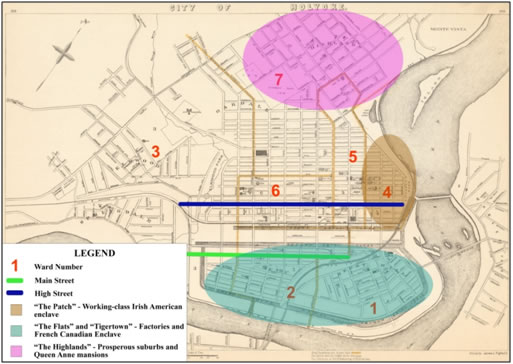
Figure 2: Overview Map of Holyoke with Legend
The second author was earlier identified as Mary Doyle Curran. Doyle Curran wrote from the perspective of a young Irish girl (based in large part on Curran’s own childhood). She was born in Holyoke in 1917 to Mary Sullivan and Edward J Doyle. Her father was a wool sorter at the city’s largest employer, the Farr Alpaca mill. Doyle Curran’s book and her unpublished manuscripts depict Irish, working class life from 1920 to 1939 (Figure 3). Ducharme’s novel, on the other hand, takes places from the 1870s to 1910. Pseudonyms notwithstanding, both Curran and Ducharme are writing about real events and people. Therefore, in this study, their works are treated with caution as primary sources that help fill in the gaps in newspaper articles, city directories, census records, company publications, and other archival sources. Each novel is a rich reserve of anecdotes about ethnic interactions with consumer culture, mass media, space, place, family, and memory. The novels by Ducharme and Curran demonstrate the agency and cohesion of working class communities in a Holyoke facing assimilation into mainstream consumer life.
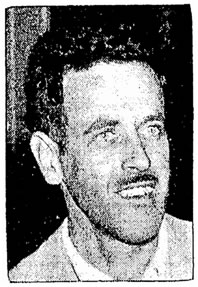
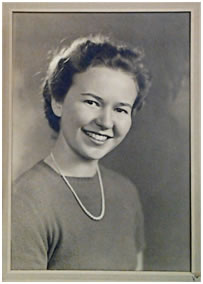
Figure 3: Jacques Ducharme, ca. 1945 and Mary Doyle Curran, ca. 1930
The two streets – the commercial thoroughfares of Main Street and High Street – were also experiencing rapid change. Whereas Main Street was the ethnic and working class core of the city, High Street contained the city’s insurance agencies, banks, department stores and high-brow cultural institutions. High Street was also the dividing line between the sanitized suburban communities and the rough-and-tumble plebian culture of The Flats and Tigertown (see Figure 2). Nevertheless, by the end of the First World War, consumer capitalism broke down these invisible boundaries and reached farther into working class neighborhoods than it ever had before, due in part to market research firms that systemized the science of mass marketing.[8] In partnership with ad empiricists like Charles Coolidge Parlin, local merchants of mass culture were able to quantify and systemize new ways of reaching working class consumers; the largest department store in Holyoke was no exception to this trend.
In the French novel, Au Bonheur des Dames (The Ladies’ Paradise), Emilé Zola counterpoised the spectacular image of Paris’ largest department store with that of the steam engine, which divided the store’s employees, broke down communal ties, and encouraged an insatiable struggle for existence in bourgeois culture. At the center of Zola’s polemic against the department store is an emerging society that historian Micheal Miller calls “more impersonal, more uniform, more machine-like, more mass-like.”[9] In Zola’s estimation, the Bon Marché was a new version of the factory – just dressed in different garb. Its employees experienced the same hierarchical differentiation, answered (even more directly) to the same need for constant turnover and profits, and worked in a space that was planned for the efficient circulation of people and goods.
Why study Holyoke consumer culture in such a context? After all, its department store never reached the epic grandeur and international reach of the Bon Marché. Yet Holyoke was exceptional in a number of other ways. At the turn of the century, it had more millionaires per capita than any other city in the United States, but its town seal of a productive beehive hints at the original intentions of the Boston capitalists (Figure 4).
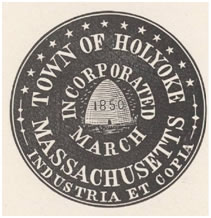
Figure 4: Holyoke Town Seal
Holyoke’s workers churned out more paper than any other place in the world; and the city’s patricians relied on a steady stream of cheap, immigrant labor – in 1890 the third highest percentage of foreign born residents in the nation.[10]
The department store in Holyoke is a node of exchange, just one of many in Holyoke that will be examined, but no less important in demonstrating how the millionaires, workers, and culture brokers interacted in a planned, hypercapitalist, industrial city.[11] In Holyoke, workers encountered “conspicuous consumption” in an intensely direct manner – notably the type of consumption that Thorstein Veblen terms the earliest form of ownership, that of servants. Class and consumption permeated the discourse of the city. Even if the characters in the novels, Mary Doyle and Etienne Delusson, continued to resist the invasion of consumer capitalism, by 1920 it could not be ignored. Finally, local stories often tell us much more than one which is a national aggregate (as Claude Levi-Strauss once quipped, “disorder reigns” in the “vast empirical stew," within which are "scattered small islands of organization”).[12] Above all, local stories tell us about the quotidian life of working class people. More numerous than the millionaires who lived in Holyoke in 1900 were multitudes of workers who were making ends meet and negotiating the trials of modernity by maintaining, as best they could, ties to family, place, and community. Consumption in Holyoke, despite all the attention paid to its downtown department store was mostly inconspicuous. As a small island of organization in the vast empirical stew of early 20th century consumer culture, Holyoke has much to tell, qualitatively, quantitatively, and spatially about working class consumer life. Before doing so, it is useful to examine Holyoke within a larger, national context. The next chapter begins appropriately with the historiography of consumption in an era that Richard Hofstadter called the “Age of Reform.”
| << Previous -- Index -- Next >> | ||||||
| Chapter 1 | Chapter 2 | Chapter 3 | Chapter 4 | Chapter 5 | Chapter 6 | Chapter 7 |
[1] Mary Doyle Curran, “Paper City,” Unpublished Manuscript (Amherst, n.d.), 56, Special Collections and University Archives, W.E.B. Du Bois Library.
[2] Mary Doyle Curran, “The Devil’s Advocate,” The Massachusetts Review 6, no. 1 (1965): 117.
[3] Henri Lefebvre, The Production of Space (Wiley, 1992), 404.
[4] “Representations of space” and “representational space” are borrowed here from Henri Lefebvre to explain the two somewhat opposed (but not exclusive) uses of space in the environment. Representional space is the space that is used in day to day practice. It is the space of action and appropriation. Representations of space are designed, planned, or imposed on the landscape – usually by centralized organizers or governments. Lefebvre distinguishes between the two by using the example of a theatrical stage. The stage itself is a representation of space with a pre-conceived design. The stage becomes representational space through the “dramatic action itself” by play actors. Cf. Lefebvre, Henri. The Production of Space. Wiley, 1992; 188.
[5] Frank Norris, The Octopus: A Story of California (Doubleday, Page & Company, 1901), 51.
[6] Constance McLaughlin Green, Holyoke, Massachusetts: A Case History of the Industrial Revolution in America (Hamden, Conn: Archon books, 1968).
[7] Alfred Minott Copeland, Our County and Its People: A History of Hampden County, Massachusetts (Century Memorial Publishing Company, 1902), 114.
[8] The Curtis Publishing Company hired Charles Coolidge Parlin starting in 1911 to map, measure, and count its vast territory of magazine subscriptions and the commercial character of major cities in the U.S.
[9] Michael B Miller, The Bon Marché: Bourgeois Culture and the Department Store, 1869-1920 (Princeton: Princeton University Press, 1981), 190.
[10] Daniel Czitrom, “The Hidden Holyoke” (Mount Holyoke College, n.d.); Green, Holyoke, Massachusetts: A Case History of the Industrial Revolution in America, 368.
[11] Hypercapitalism is a term used by Marxist scholars to describe capitalistic organization characterized by speed and intensity of the exchange of goods, people, and information. Hypercapitalism is often called “corporate capitalism,” and is claimed by critical scholars to cause culture and commerce to overlap and merge. Vujnovic, Marina. “Hypercapitalism.” In The Wiley-Blackwell Encyclopedia of Globalization. Blackwell Publishing Ltd, 2012.
[12] Qtd. in Yi-fu Tuan, Escapism (Baltimore: Johns Hopkins University Press, 1998), 107.